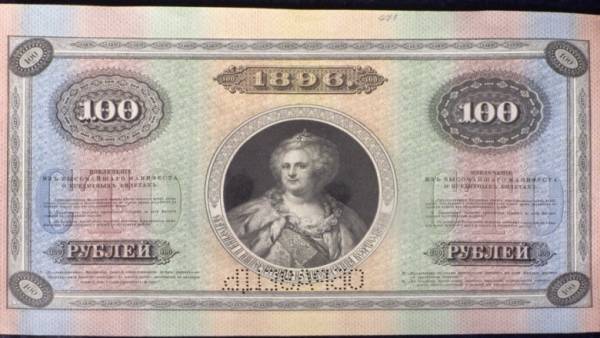Paper money introduced in Russia for the sake of war. They almost destroyed its economy
Expensive crunch.

Paper money in Russia appeared relatively recently — even 250 years ago, the Russian fed has paying bulky and heavy coins made of precious metals. For major purchases I had to carry bags weighing hundreds of kilograms. The inconvenience and complexity of the calculations has forced the government to seek alternative, and it was the first country in the history of banknotes. They helped to win the war in Turkey, but then almost destroyed the economy. In Europe have gone this way a hundred years earlier, and in China — for just a Millennium. As Empress, born in Germany, created the modern financial system of Russia — in the material “Tape.ru”.
29 Dec 1768 (9 January 1769-th new style), Empress Catherine II issued a decree on the establishment in Russia of two assignat banks. They had to provide the country the first in its history of paper money and the Treasury and resources to another Turkish campaign. Not all planned managed to implement immediately, but the population learned that the usual coins can be an alternative, besides, more convenient.
Flying Chinese
Pioneers in the introduction of paper money were the Chinese. The first prototype banknotes appeared in China in the seventh century ad, during the reign of the song dynasty. However, the full extent of the money they were not — it was more paper receipts certifying the fact of making a deal.
Gradually, the merchants carrying their wares along the Great silk road, realized that to carry heavy copper coins (standard bundle weighed about three pounds), which occupied a lot of place, uncomfortable. They appealed to the government to make their lives easier, and it had decided on the mass release of FEI-Qian — “flying money.”
The solvency of the owner is guaranteed dataname — farmsteads provincial authorities in the capital (then it was the city Banilad). Since all major trades were conducted there, merchants traded svejenarublennoyi coins on FEI Qian in datsane his province, and once home, made the reverse operation. If they had to buy something in the road, they could pay “flying money”. The local administration also had its benefits: accumulated coins earned from traders in the capital, and paid their taxes to the Emperor, freed from having to carry them across the country.
In 1357 in China ruled by the Mongol Empire, silk drove the merchants from Florence, an Italian city at that time was the center of an independent commune, and its economy was based on textile industry. With them they carried the usual silver coins, but in the Crimea, which was part of the Golden Horde, faced with the requirement of local authorities to exchange them for “pieces of yellow paper.” The Florentines were convinced of the convenience of such means of payment, which is easily adopted in China, but neither in Italy nor in the rest of Europe, it initially did not catch on.
Assembled
The situation changed in 1661 when their notes released Bank Stockholm: the Swedish government has decided to gradually withdraw expensive treatment in the manufacture of gold, silver and copper coins. That is the Scandinavians borrowed the idea of Russia. Overseas curiosity Alexei Mikhailovich, the second Tsar of the Romanov dynasty — said the Novgorod merchant Simeon Gavrilov. The king ordered to investigate the matter, and that it was clear, the official name of the “credit card” translated as “devout card”.
But to introduce paper money in Russia was destined not to Tsar Alexei the Quietest, and Catherine II the great, born a subject of Prussia Sophia August Frederica of Anhalt-Zerbst ascended the throne 86 years. When her Russian economy has shown rapid growth: developed exports —mainly of iron, iron, wood and wheat was abolished the state monopoly on trade with China. The country sold raw materials and purchased finished products of them import more than three times higher than its own production, helped by the continued enslavement of the peasants.
Strict regulation of the domestic sector was combined with the liberalization (in contrast with the protectionist policies of Elizabeth). Moreover, in 1768, that Russia has entered the next war with the Ottoman Empire in the calculation to obtain access to the Black sea. Military actions require additional costs. If in the beginning of the reign of the Empress in the country there was an excess of money supply, threatening inflation (which was a ban on the free exchange of copper coins for silver), then after a few years the money was not enough. To mint new coins was expensive, so the decision was made to issue banknotes.